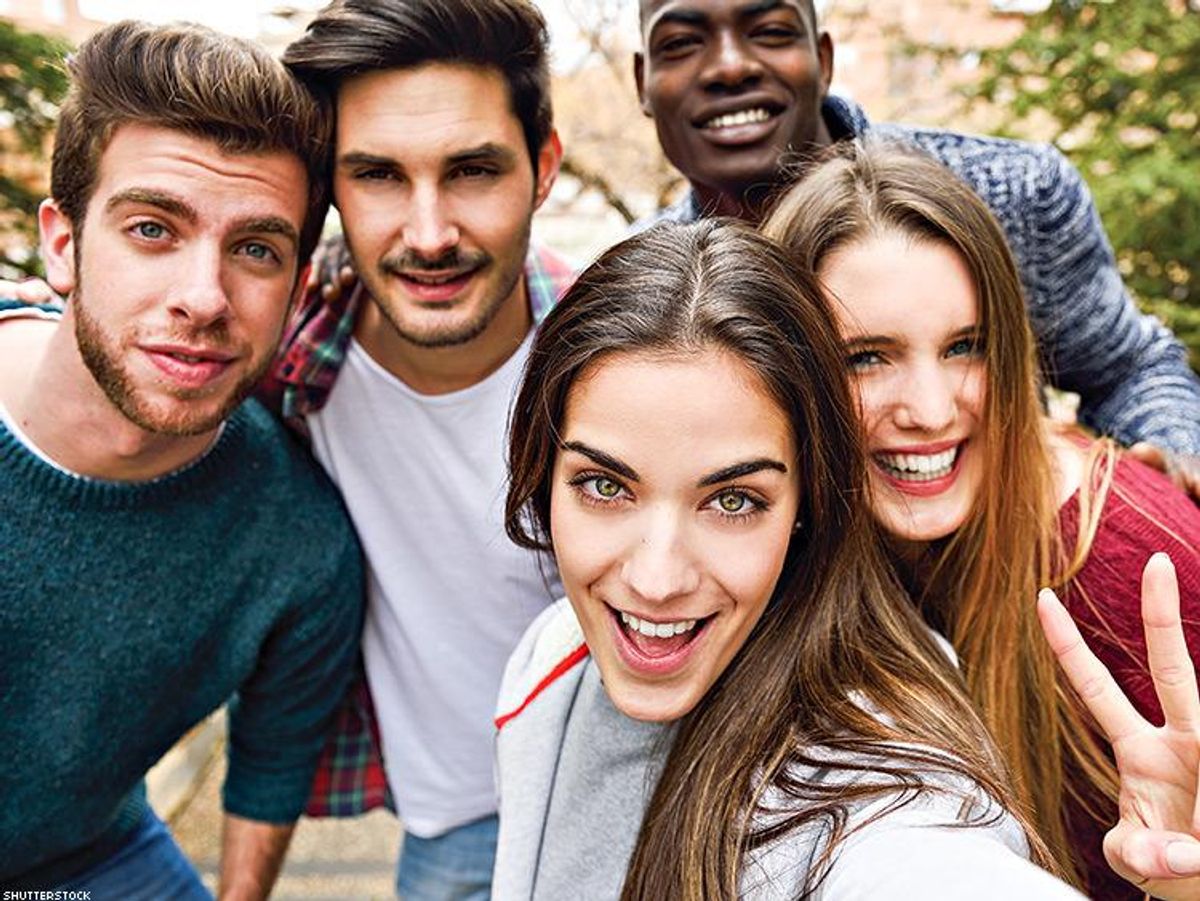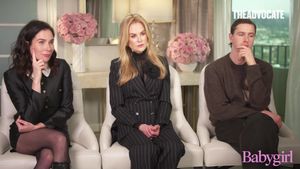Bisexual people have a long history of being misunderstood within the queer community, despite making up 52 percent of all self-identified LGBT people, according to a landmark 2011 study by the Williams Institute.This stigma and invisibility from queer and straight folks is a contributing factor in the poor health outcomes many bi people experience: Rates of drug and alcohol use, smoking, suicide, and intimate-partner violence are all markedly higher for bisexuals.
A major obstacle in determining which areas of health care need most attention for bisexual people is that many bi folks also identify as something other than "bisexual" -- including queer, polyamorous, pansexual -- or they eschew labels and self-identifying altogether. The Williams Institute study revealed that roughly half of all transgender people are also bi-identified. Additionally, many persons whom health researchers and practitioners would consider "behaviorally bisexual" actually identify as gay, lesbian, or straight (including what researchers have dubbed men who have sex with men).
The bisexual community has tried to adapt to this difficulty in self-definition by incorporating several sub-populations into the relatively new catch-all term "bi+," which includes polyamorous, pansexual, and asexual people.
In 2016, Dr. Eliseo J. Perez-Stable, director of the National Institute on Minority Health and Health Disparities, with support from the Agency for Healthcare Research and Quality at the U.S. Department of Health and Human Services, formally designated sexual and gender minorities as a disparity population for research purposes. The move opened up new pathways (and funding), aimed at identifying and mitigating the significant health disparities facing SGM, including intersex folks.
Fighting Bi Erasure
Funding is a significant issue, as many national bisexual leaders have speculated that regional and national LGBT service organizations may cite severe statistics about poor bisexual health outcomes in order to obtain grant funding, then fail to provide commensurate services to the bisexual communities they serve. If this is true, it may not even be intentional.
According to "Invisible Majority," the groundbreaking 2016 report from the national independent queer think tank Movement Advancement Project, "Bisexual people are frequently swept into the greater {LGBT]community, their specific disparities made invisible within data about the {queer] community as a whole."
Indeed, Brian Dodge, associate director of Indiana University Bloomington Center for Sexual Health Promotion, says he sees "erasure" in the field and argues that one problem is the way health data has masked bisexuals and their specific health concerns.
"It's not even necessarily intentional on behalf of these organizations," Dodge says. But it wasn't until recently, that "we've been demanding that people start to report the data more appropriately. There are some people too, who ignore even the bi-specific data that we do have."
Many organizations say they are not permitted to ask the sexual orientation or gender identity of board members, staff, or clients, thus making it nearly impossible to determine if bisexual (or pansexual and other folks in the bi+ umbrella) are receiving proportionate representation.
Dodge agrees that this factor increases difficulty in conducting research; in proving, or disproving, any particular data points; and in confirming whether bisexuals are being adequately served by their health care providers or represented in the leadership, staff, and volunteers who serve them.
Heron Greenesmith, senior policy analyst at MAP, says "For the first time" MAP's 2016 National Movement Report: A Financial Overview of Leading Advocacy Organizations in the LGBT Movement "included a question about staff and board sexual orientation in the report on LGBT orgs... [reportedly] seven percent of organization staff and two percent of their boards identified (to their managers) as bi. However, there were a ton of 'other' responses in both, which may be a lot of bi-umbrella folks."
Dan Millett, development coordinator of the Hartford Gay and Lesbian Health Collective, estimates that 20 percent of its clientele self-identify as bisexual. According to a sexual orientation pie chart on GMHC's website, only 7 percent of its clients are bi-identified. The 2016 Voices of Health survey, distributed at Minnesota Pride events and online by the Rainbow Health Initiative in Minneapolis, found that 25 percent of respondents identified as bisexual, 19 percent as queer, and four percent as pansexual.
Heidi Johnson, Rainbow Health's marketing and communications director, reports that its "ongoing partnerships with researchers and organizations, such as Dr. Lauren Beach and the Bisexual Organizing Project, ensure that as an organization we are strategic and intentional in how we work to improve health access and experience for bisexual-plus people." That's important since the Bisexual Organizing Project has been addressing bisexual health issues for decades, especially with its annual Bi+ Empowerment Conference: A Uniting, Supportive Experience (best known as the BECAUSE Conference, November 10-12).
Research Advances
Despite such disadvantages, advances in bi health research and awareness are being made. In 2003, the North American Conference on Bisexuality hosted the first Bi Health Summit in San Diego. In 2007, The Fenway Institute, BiNet USA, and the National LGBTQ Task Force published the groundbreaking Bisexual Health: An Introduction and Model Practices for HIV/STI Prevention Programming.
A breakthrough in national bisexual health policy occurred in 2013, at the Bisexual Leadership Roundtable, where 33 bi activists presented policy papers to the Obama administration, so government departments like Health and Human Services could better understand the issues facing bisexuals. One of the featured presentations, "Bisexual Health," was by Amy Andre, who co-authored the groundbreaking report of the same name and later took a position with HHS.
A year later, 25 leading national bisexual health researchers and community activists met in Boston to discuss the state of research on bi health and formed the Bisexual Research Collaborative on Health. Since then, BiRCH has facilitated discussions, put on a national conference, and increased public awareness of bi health issues.
One of those issues is monosexism, detailed in Tangela S. Roberts's 2016 research study, Between a Gay and a Straight Place: Bisexual Individuals' Experiences with Monosexism. The privileging of sexual attraction to one sex or gender, Roberts concluded, impacts bisexual people immensely, as they face discrimination from both queer and straight communities.
Rainbow Health Initiative's Voices of Health concluded, "Bisexual people were dramatically less likely to be out (34 percent) to their doctors than lesbian (76 percent), gay (75 percent), or queer (52 percent) people." That disparity is significant because bisexual people have some of the worst health outcomes of any sexual minority around substance use, depression, suicide, and sexual assault.
There remain significant sociopolitical barriers to obtaining health outcome parity and proportionate representation for bisexual people. But, without doubt, the movement is gaining momentum, due in part at least to a growing public acknowledgment that bisexuality is far more prevalent than many previously imagined.
Ron J. Suresha is a bi activist and author who is featured in the anthology Recognize: The Voices of Bisexual Men. He served on the first Bisexual Leadership Roundtable and has spoken at the White House.


















































































